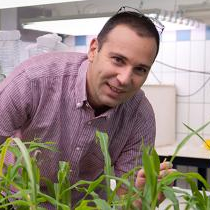Nematodes: Drivers of Agricultural Ecosystem Performance
A special issue of Agronomy (ISSN 2073-4395). This special issue belongs to the section "Pest and Disease Management".
Deadline for manuscript submissions: closed (15 September 2022) | Viewed by 27119
Special Issue Editors
Interests: plant–insect interactions; entomopathogenic nematodes; chemical ecology; sustainable agriculture
Interests: plant–insect interactions; community ecology; chemical ecology; ecological gradients; coevolution
Interests: plant protection; biotechnology; green chemistry; biochemistry; analytical chemistry
Interests: biochemistry; agricultural plant science; bioinformatics; plant-parasitic nematodes; plant nematode interaction; plant protection; Nematode interaction with antagonistic microorganisms
Special Issue Information
Dear Colleagues,
We would like to invite the submission of research articles or reviews for the Agronomy Special Issue “Nematodes: Drivers of Agricultural Ecosystem Performance”.
Nematodes, the most abundant animal on Earth, undoubtedly influence agroecosystems. Plant-pathogenic nematodes threaten food security in both developed and developing countries. These root-feeding nematodes negatively affect plant performance in all major crops worldwide. Whereas nematodes undeniably have a dramatic impact on yield, they can also be beneficial. Indeed, certain species are obligate parasites of insect herbivores and are used to manage agricultural pests. Both plant-parasitic and beneficial nematodes more or less intimately interact with crop plants and affect their phenology and yield.
Recent progresses in molecular ecology, modeling, behavioral ecology, and plant/nematode physiology have brought to light the complexity of nematode interactions with their environment and hosts, and challenge our current understanding. This Special Issue aims to look at these interactions through a wide lens to bring light to the complexity of these ecological links.
We solicit research articles presenting results from all fields aiming at refining ecological, behavioral, physiological, or molecular understanding of nematodes as ecological drivers in agroecosystems and pest management. We also welcome review articles that provide a sound understanding of the interactive physiology of these organisms.
Dr. Ivan Hiltpold
Prof. Dr. Sergio Rasmann
Dr. Andrea C. Ruthes
Dr. Paul Dahlin
Guest Editors
Manuscript Submission Information
Manuscripts should be submitted online at www.mdpi.com by registering and logging in to this website. Once you are registered, click here to go to the submission form. Manuscripts can be submitted until the deadline. All submissions that pass pre-check are peer-reviewed. Accepted papers will be published continuously in the journal (as soon as accepted) and will be listed together on the special issue website. Research articles, review articles as well as short communications are invited. For planned papers, a title and short abstract (about 100 words) can be sent to the Editorial Office for announcement on this website.
Submitted manuscripts should not have been published previously, nor be under consideration for publication elsewhere (except conference proceedings papers). All manuscripts are thoroughly refereed through a single-blind peer-review process. A guide for authors and other relevant information for submission of manuscripts is available on the Instructions for Authors page. Agronomy is an international peer-reviewed open access monthly journal published by MDPI.
Please visit the Instructions for Authors page before submitting a manuscript. The Article Processing Charge (APC) for publication in this open access journal is 2600 CHF (Swiss Francs). Submitted papers should be well formatted and use good English. Authors may use MDPI's English editing service prior to publication or during author revisions.
Keywords
- chemical ecology
- metabolites
- integrated pest management
- rhizosphere
- root







